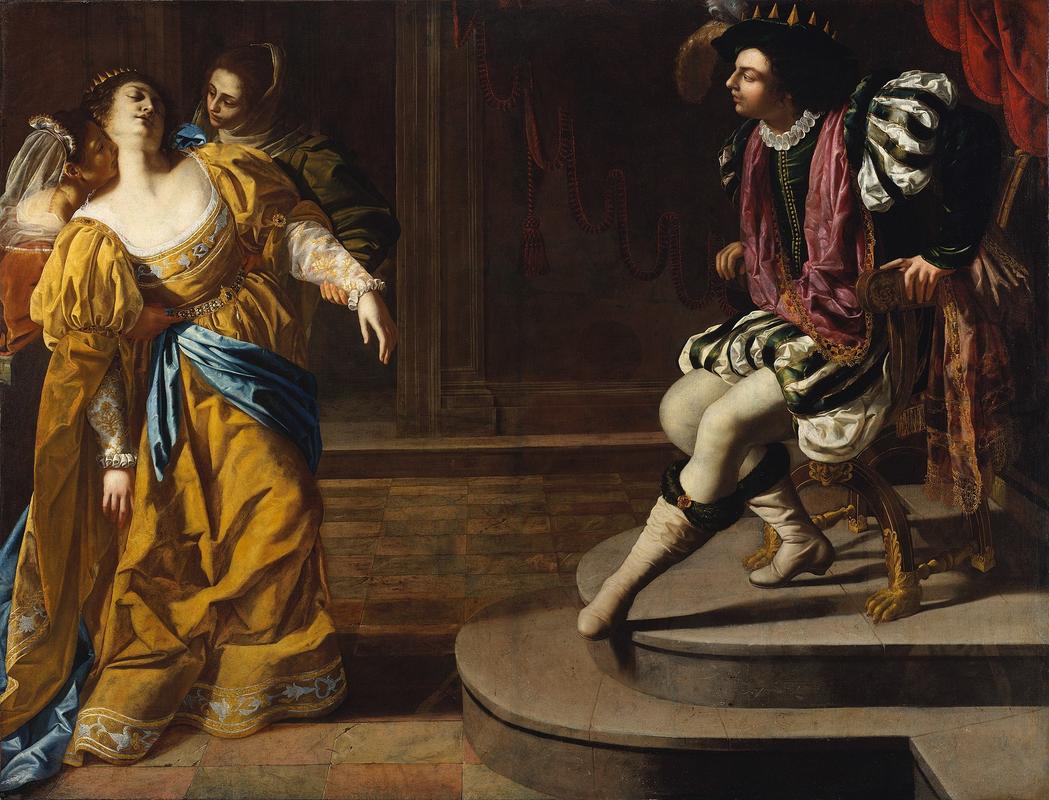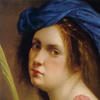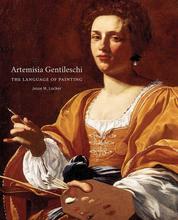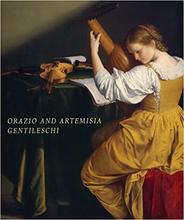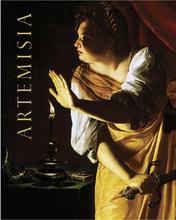More about Esther before Ahasuerus
- All
- Info
- Shop

Sr. Contributor
Artemisia Gentileschi is known for Biblical scenes of women violently killing men. So why is Esther Before Ahasuerus so tame?
When you really get down to it, the Old Testament contains countless stories of Jews getting the really short end of the stick. Always a popular topic for art, the Bible has provided endless, artistic inspiration. Sometimes, like in the stories of Adam and Eve and Samson and Delilah, women can cause problems. Other times, women get sweet, sweet revenge on those trying to persecute the Jews. Caravaggio painted an especially gruesome (and awesome) scene of Judith and Holofernes. Artemisia Gentileschi was the first woman to become well-known for her paintings of Biblical stories, which were the most respected types of paintings during the Renaissance and Baroque eras. She particularly loved to paint scenes of female-induced violence.
When viewed as a whole, Artemisia’s litany of badass, Biblical women can seem a little troubling. Many have explained this trend as a possible way to cope with the fact that her tutor, fellow artist Agostino Tassi, raped her when she was seventeen years old. Although compelling, this point of view frames Artemisia as a man-hating feminist. Not cute. But Artemisia was much more nuanced than previous art historians have made her out to be. This painting suggests that she recognized the complicated nature of living in a gendered society.
Despite the lack of blood and guts, Artemisia’s version of Queen Esther’s triumph over the Persian king Ahasuerus is a pretty unique interpretation. Many other paintings illustrate the tale’s happy ending. Artemisia, on the other hand, portrays the moment in which Esther faints in fear as she is about to face the king to ask him to give the Jews a break for once. Ahasuerus had gotten rid of his previous wife Vashti before taking Esther as a wife, so she was nervous that he would do her in, too. Artemisia upped the tension by leaving a huge, blank space between the two main characters. If you look closely you can see the outline of a young boy, whom she ultimately decided to paint out, next to the king’s right knee. Don’t start asking yourself how Artemisia could have left the silhouette so visible – it’s gotten more pronounced over time as the layers of paint have become more transparent.
Artemisia also made her rendition different by dressing the characters in contemporary costume. There’s no way these Biblical figures would have worn duds half as fancy as the ones we see here. Usually, other artists portrayed Ahasuerus in stereotypical, Persian dress, à la Delacroix’s Death of Sardanapalus. She even went so far as to put the Persian king in the type of clothes that were associated with the theater. The goal was to make us think that he looks ridiculous, and well, she did a good job.
By updating the look and feel of the characters, Artemisia provided a new reading for Esther and humanized the Biblical heroine for contemporary, Renaissance audiences. As a frequent decoration for marriage chests, Esther’s story served as a model for being a brave wife. But how brave could a woman really be when she was the enslaved wife of an evil king? Showing her in a moment of weakness, Artemisia's Esther becomes more of a real woman who seems to say that it’s okay to be scared sometimes, girl. This Esther isn’t obsessed with murdering her captor. Instead she’s a strong woman making the best of a bad situation for the good of the Jews.
Sources
- Keith Christiansen. “Artemisia Gentileschi’s Esther Before Ahasuerus.” The Met Blog. March 29, 2010. http://www.metmuseum.org/blogs/now-at-the-met/features/2010/artemisia-g…. Accessed June 27, 2017.
- Christiansen, Keith, and Judith W. Mann. Orazio and Artemisia Gentileschi. New York: The Metropolitan Museum of Art, 2001.
- Perkins, Elizabeth. Looking to Connect with European Paintings: Visual Approaches for Teaching in the Galleries. New York: The Metropolitan Museum of Art, 2013.
- Poggioli, Sylvia. “Long Seen As Victim, 17th Century Italian Painter Emerges As Feminist Icon.” All Things Considered. National Public Radio. December 12, 2016. http://www.npr.org/sections/parallels/2016/12/12/504821139/long-seen-as…
- The Metropolitan Museum of Art. “Catalogue Entry.” Esther Before Ahasuerus. http://www.metmuseum.org/art/collection/search/436453. Accessed June 27, 2017.
Featured Content
Here is what Wikipedia says about Esther Before Ahasuerus (Artemisia Gentileschi)
Esther Before Ahasuerus is a painting by the 17th-century Italian artist Artemisia Gentileschi. It shows the biblical heroine Esther going before Ahasuerus to beg him to spare her people. The painting is now in the Metropolitan Museum of Art in New York, having been donated to the museum by Elinor Dorrance Ingersoll in 1969. It is one of Gentileschi's lesser known works, but her use of lighting, characterization, and style help in successfully portraying Esther as a biblical heroine as well as the main protagonist of the work.
The painting is not specifically dated and the patron or the commissioner of the painting is still unknown. Scholars of Baroque art and Artemisia Gentileschi hold various opinions over when the painting was created; many believe that Esther Before Ahasuerus was painted during the 1630s, during Artemisia's first Neapolitan period.
Check out the full Wikipedia article about Esther Before Ahasuerus (Artemisia Gentileschi)

